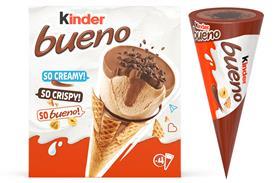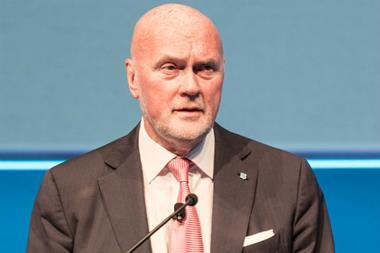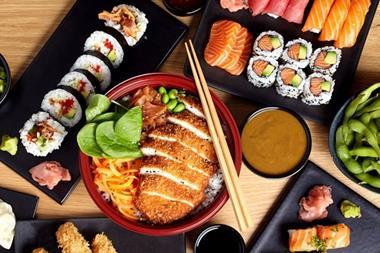Suppliers must strive for strong signals on fixtures and clear information on packaging to maximise appeal
Retailers should get their specialist battery fixture right for two reasons, Panasonic believes.
Firstly, with their premium prices and smaller number of price promotions, they are a valuable subsector. And secondly, they are more of a destination purchase than their more mainstream general-purpose counterparts.
While customers might be tempted to pick up more AA or AAA-size batteries as and when they remember, fitting their car key fob with a new LR44 is more of a planned purchase, says Panasonic’s Tim Clark. “If you don’t list these, the opportunity can be lost.”
In the market overall, the top five cell types - AA, AAA, C, D and 9V - account for almost 90% of volume sales, AA alone taking more than 60% of volume sales alone [Mintel, July 2004].
Business is also highly seasonal, with 65% of sales between October and December, according to distributor Supreme Imports.
Duracell, which has led the way in colour-coding, believes such confusion-reducing measures have become crucial to capturing the impulse
battery customer but concedes that it is hard to pin down particular sales to colour coding alone. Senior business manager Flavio Palumbo says this is an area the company is interested in developing further.
For its part, Energizer believes that battery chemistry is now a more important consideration than battery size and has included front of pack claims and pictorial references on its new Ultimate Lithium range to help
customers choose the right battery for their appliances.
According to Energizer UK marketing director Paul Ardron, on-pack information will also be supported by complementary link-ups with digital camera partners and grocers’ photo counter staff.
Sony and Panasonic have similarly adopted clearer on-pack information. The latter claims this has increased intention to purchase of its batteries range by 84%.
With shoppers only buying batteries on average 2.6 times a year [ACNielsen Homescan MAT June 2005], retailers also realise the importance of impulse sales.
Last year Morrisons won the gold award in the British Point of Purchase Awards for its battery fixture, which it locates opposite the till points.
According to home and leisure director Andrew Pleasance, the highly visible in-store location is also supported by a number of secondary promotional displays throughout the store.
The Co-operative Group also has hopes for its new secondary Energizer fixture, located in-store away from the normal kiosk location.
The Co-operative Group offering concentrates on the top five lines at just two price points to reflect the difference in product performance. Michelle Wilkinson, category buyer, of non-food, says: “The fixture layout is very simple, with the focus on core lines, and promotions from just two price points.”
At Somerfield, batteries have moved on to gondola ends to target higher customer traffic.
Retailers should get their specialist battery fixture right for two reasons, Panasonic believes.
Firstly, with their premium prices and smaller number of price promotions, they are a valuable subsector. And secondly, they are more of a destination purchase than their more mainstream general-purpose counterparts.
While customers might be tempted to pick up more AA or AAA-size batteries as and when they remember, fitting their car key fob with a new LR44 is more of a planned purchase, says Panasonic’s Tim Clark. “If you don’t list these, the opportunity can be lost.”
In the market overall, the top five cell types - AA, AAA, C, D and 9V - account for almost 90% of volume sales, AA alone taking more than 60% of volume sales alone [Mintel, July 2004].
Business is also highly seasonal, with 65% of sales between October and December, according to distributor Supreme Imports.
Duracell, which has led the way in colour-coding, believes such confusion-reducing measures have become crucial to capturing the impulse
battery customer but concedes that it is hard to pin down particular sales to colour coding alone. Senior business manager Flavio Palumbo says this is an area the company is interested in developing further.
For its part, Energizer believes that battery chemistry is now a more important consideration than battery size and has included front of pack claims and pictorial references on its new Ultimate Lithium range to help
customers choose the right battery for their appliances.
According to Energizer UK marketing director Paul Ardron, on-pack information will also be supported by complementary link-ups with digital camera partners and grocers’ photo counter staff.
Sony and Panasonic have similarly adopted clearer on-pack information. The latter claims this has increased intention to purchase of its batteries range by 84%.
With shoppers only buying batteries on average 2.6 times a year [ACNielsen Homescan MAT June 2005], retailers also realise the importance of impulse sales.
Last year Morrisons won the gold award in the British Point of Purchase Awards for its battery fixture, which it locates opposite the till points.
According to home and leisure director Andrew Pleasance, the highly visible in-store location is also supported by a number of secondary promotional displays throughout the store.
The Co-operative Group also has hopes for its new secondary Energizer fixture, located in-store away from the normal kiosk location.
The Co-operative Group offering concentrates on the top five lines at just two price points to reflect the difference in product performance. Michelle Wilkinson, category buyer, of non-food, says: “The fixture layout is very simple, with the focus on core lines, and promotions from just two price points.”
At Somerfield, batteries have moved on to gondola ends to target higher customer traffic.













No comments yet